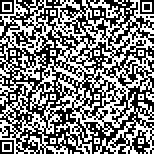下载中心
优秀审稿专家
优秀论文
相关链接
摘要

根据地理空间认知理论,探讨了旅游者对地理空间认知的基本过程、特征以及基于不同空间信息表达方式的旅游者空间认知效果.研究发现旅游者的空间认知效果受到空间信息表达形式的影响;指出作为特殊群体的旅游者,其地理空间认知明显不同于一般人群,而主要集中在空间特征感知、空间对象认知和空间格局认知3个层次.旅游者空间特征感知受制于旅游场景;在空间对象认知方面侧重于旅游要素认知,主要采用旅游要素决定模式,其中距离认知采用时间决定模式;方向认知主要采用地标定向和拓扑关系判别模式;旅游景区的认知主要依据心理意象,大尺度旅游者采用文化差异选择模式,而中小尺度的旅游者则是功能差异选择模式;旅游空间格局认知则是旅游功能特征、旅游空间对象和地理特征认知的综合.
Geospatial cognition is an mi portant theme in the field of geo-information science and the study on it has\nsprung up since last century. In 1995, the report ofAdvancing Geographic Information Science was published. It put\nforward three mi portant study fields, including the geospatial cognitive mode, geography conceptmathematicalmethod,\ngeo-information and social study. In 2001, the geospatial cognition as a preferential sustaining projectwas supported by\nthe committee ofnationalnatural science fund inChina. Based on smi ilar studiesboth athome and abroad and theories of\ngeo-information science, psychology and tourists behavior, its study system has been shaped. The paper discusses the\nbasic process and characteristics of tourists geospatial cognition, aswell as the effectof tourist spatial cognition based on\ndifferentgeospatial forms. It ami s to solve study difficulties of tourist cognition and tries to build the cognitivemode. In\npractice, the paper ami s to help expression ofgeo-information, tourism resource development, tourism planning, products\nand design of traveling routes and tourism marketing.\nThe data of this study came from field research about cross-bound tourists& domestic tourists in 1997—2005. The\nfield research included what cognitive results of touristswas influenced by forms of different geospatial information and\nwhichwas the emphasis ofgeospatial cognition.6353 questionnaireswere totally obtained. Through statisticalmethod and\ntheory analysis, the research shows that the tourist geospatial cognition ismainly focused on the spatial characteristics\nperception, the spatialobjectcognition and the spatialpattern cognition, especially in distance cognition, direction cogni-\ntion, scenic areas cognition and geospatial patterns cognition.\nThe geospatial cognition takes place in cognitive space. As specialgroup ofpeople, tourists have differentgeospatial\ncognition comparedwith other people. The spatial characteristics perception is affected by tourism and geography environ-\nment. The spatial object cognition of tourists is determined by tourism elements, such as hote,l restaurant, traffic, shop-\nping, amusement; Tourists paymore attention to cognitive distance. So the distance cognition ismainly determined by\ntmi e; Tourists cognitive direction by the mode of typical land mark and different topological relation. The cognition of\nscenic areas ismainly based on tourists psychological mi age. Long-distance touristsmake decisions according to themode\nof the cultural difference, whereasmedium and shortdistance tourists adopt themode of functionaldifference. The cogni-\ntion of touristgeospatial patterns is an integration of tourism functional features, spatialobjects and perception of regional\ngeographical features.\nOur currentgoal is to develop a geospatial cognitivemode of tourists. Itcan be used for expression ofgeo-information\nand design of tourism routes. A key aspectof thiswork is the field research and geospatial cognition type of tourists. The\ngeospatial cognitive mode built, but the mode frame needs to be increased further. Othermethods would be used for\ndifferent tourists.

